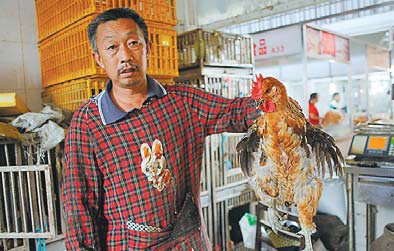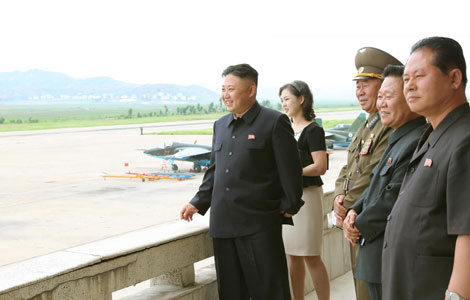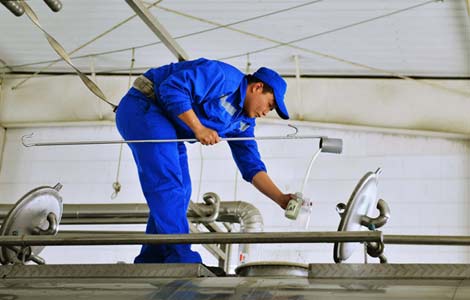Live poultry industry slowly picking up after H7N9 scare
Updated: 2013-06-21 07:03
By Yu Ran in Shanghai (China Daily)
|
||||||||
|
Wang, a vendor from Anhui province, sells live chickens at Hongmiao agricultural produce market in Shanghai on Thursday, about two months after a ban on sales of live poultry was imposed following the H7N9 avian flu outbreak. Gao Erqiang / China Daily |
Going to the market to buy a live chicken was the first thing on Wu Hongmin's schedule this weekend.
When the 51-year-old housewife heard the news that live poultry markets in Shanghai would reopen after being shut down for more than two months since the outbreak of the H7N9 bird flu, she was pleased.
"I'm delighted that fresh chicken is back on our table, and I think the poultry will be much safer than before because of the more restricted examination process," said Wu, who believes live poultry tastes better and is more nutritious.
The first group of markets, including 200 retailers and two wholesale venues, reopened on Thursday, selling live chickens, pigeons and quails.
Previously, there were three wholesale markets and 461 retailers.
The new regulation on live poultry trading states that all markets must carry out regular examinations on sellers, equipment facilities, animal epidemic prevention, food safety and environmental protection.
Poultry may only be slaughtered in the selected markets.
Other live poultry such as ducks and geese remaines unavailable.
"We've spent more than two months checking things and decorating to get ready for the reopening," said Gu Yaofeng, director of the general affairs office of the Shanghai Agriculture Central Wholesale Market.
On Thursday, the market sold 1,500 chickens and 950 pigeons, a sharp decrease compared with a combined figure of 20,000 to 30,000 per day before the bird flu outbreak. But Gu said the market will make a full recovery soon.
Gu's positive attitude has been echoed by retailers.
"Generally speaking, our store can sell 70 to 80 chickens a day at about 30 yuan ($5) each," said Xu Ping, a salesman from Fuzhong wet market.
Although suffering losses in the past two months, Xu is confident his store will bounce back into business as before. "I won't make quick money by raising prices."
Most of the selected retailers are to begin selling poultry on Friday after purchasing from wholesalers.
A complete tracing system is to be set up, in which the markets are to issue receipts for all live poultry sold.
The outbreak of the H7N9 flu at the end of March brought the industry to a standstill.
To prevent the spread of the virus, the government closed many markets in some areas, including Zhejiang and Jiangsu provinces.
Markets not on the list are waiting to see if the poultry industry will recover.
"To my knowledge, only three large agriculture markets in Putuo district reopened, and those privately owned and small markets where my stand was are still closed," said Zhu Jing, a poultry seller on Gaoling Road and a regular supplier to nearby restaurants and residents in the past two decades.
"At least certain markets reopened for live poultry trading after waiting for more than two months. I choose to wait a bit longer, so I can continue to sell live poultry in the future," Zhu said.
Jiang Yinan contributed to this story.
yuran@chinadaily.com.cn
(China Daily USA 06/21/2013 page5)
Most Viewed
Editor's Picks

|

|

|

|

|

|
Today's Top News
China slams US human trafficking report
China urges resumption of six-party talks
SEC charges China-based firm with fraud
Bank of China denies monetary default report
Snowden's future hangs in balance
China reiterates support for the UN
Dairy measures start at source
June PMI signals weakness
US Weekly

|

|
















